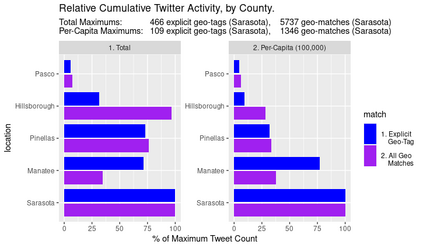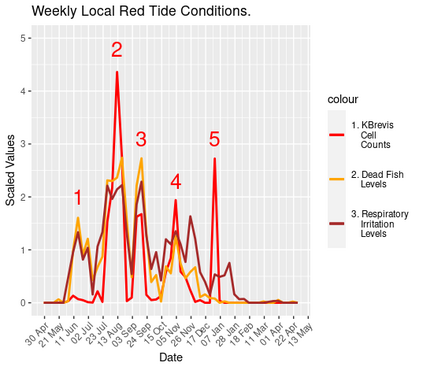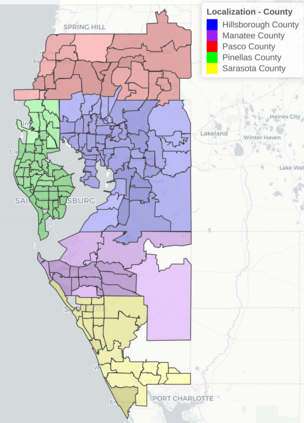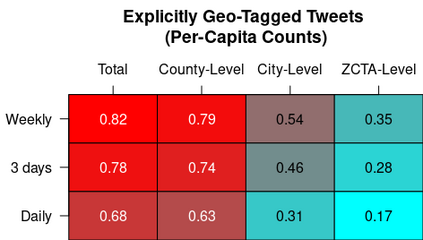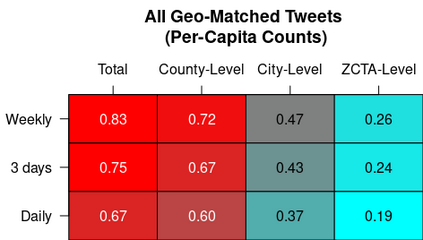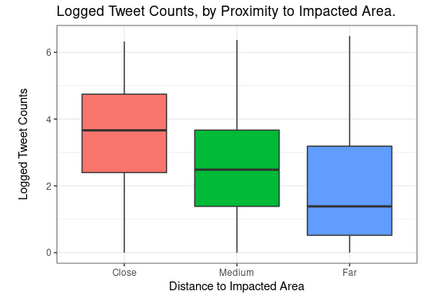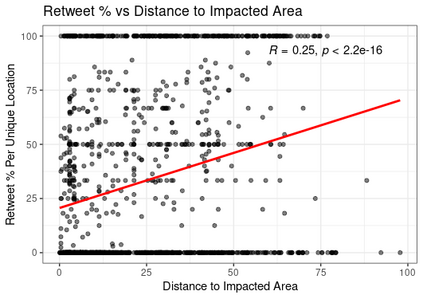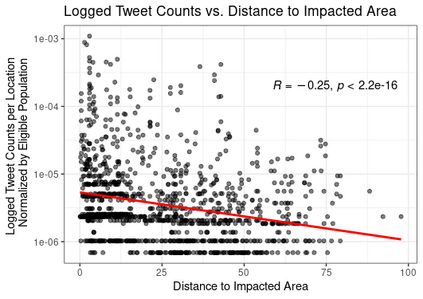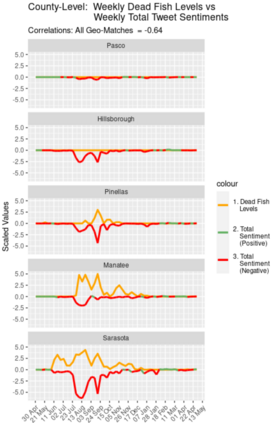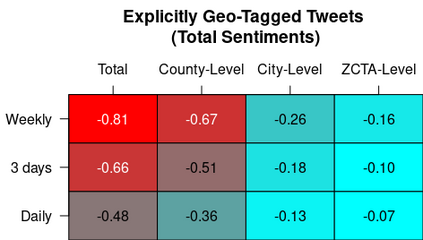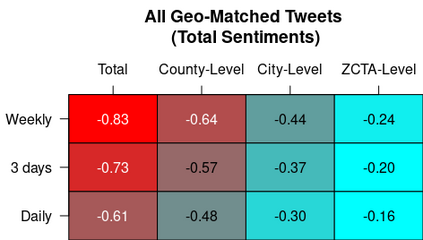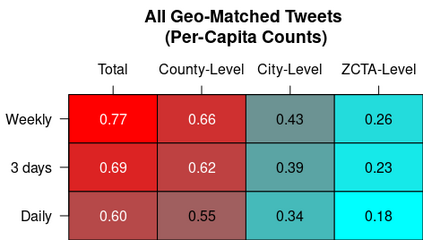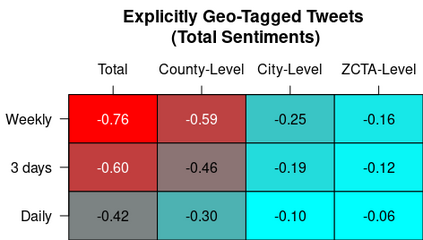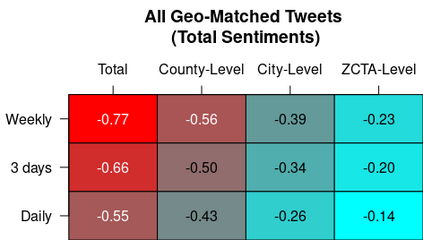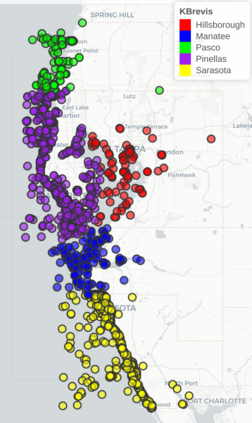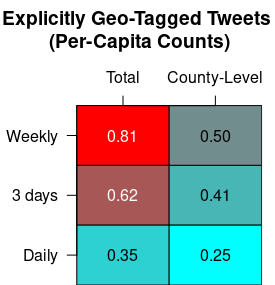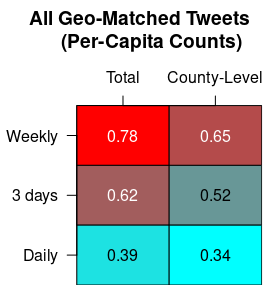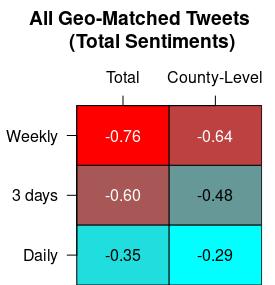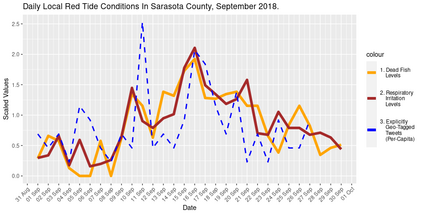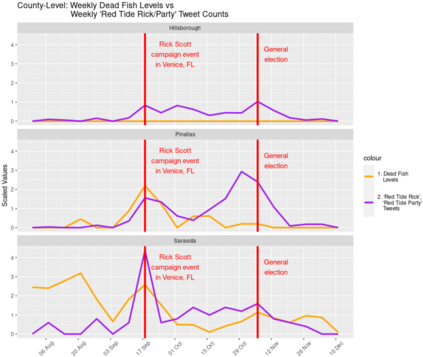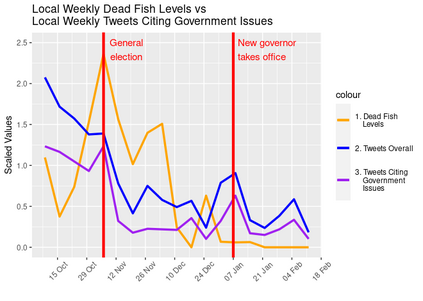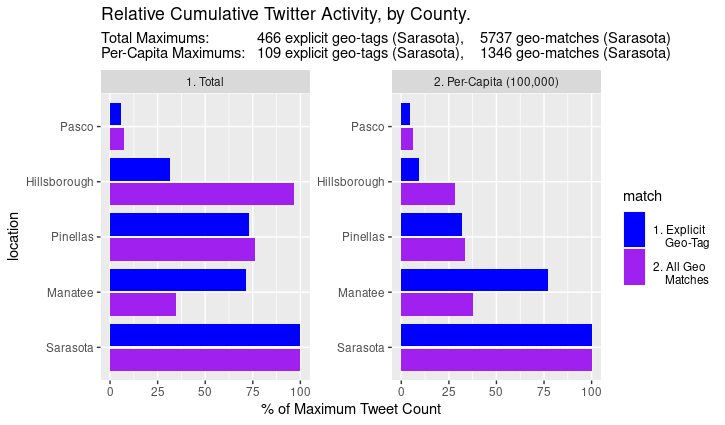Red tide blooms of the dinoflagellate Karenia brevis (K. brevis) produce toxic coastal conditions that can impact marine organisms and human health, while also affecting local economies. During the extreme Florida red tide event of 2017-2019, residents and visitors turned to social media platforms to both receive disaster-related information and communicate their own sentiments and experiences. This was the first major red tide event since the ubiquitous use of social media, thus providing unique crowd-sourced reporting of red tide impacts. We evaluated the spatial and temporal accuracy of red tide topic activity on Twitter, taking tweet sentiments and user types (e.g. media, citizens) into consideration, and compared tweet activity with reported red tide conditions, such as K. brevis cell counts, levels of dead fish and respiratory irritation on local beaches. The analysis was done on multiple levels with respect to both locality (e.g., entire Gulf coast, county-level, city-level, zip code tabulation areas) and temporal frequencies (e.g. daily, every three days, weekly), resulting in strong correlations between local per-capita Twitter activity and the actual red tide conditions observed in the area. Moreover, an association was observed between proximity to the affected coastal areas and per-capita counts for relevant tweets. Results show that Twitter is a reliable proxy of the red tide's local impacts and development over time, which can potentially be used as one of the tools for more efficient assessment and a more coordinated response to the disaster in real time.
翻译:在2017-2019年佛罗里达极端的红色潮汐事件期间,居民和访客转向社交媒体平台,接受与灾害有关的信息,并交流自己的情绪和经验。这是自无处不在地使用社交媒体以来第一次大型的红色潮汐事件,从而对红色潮汐的影响提供了独特的众源报道。我们评估了Twitter上红潮主题活动的空间和时间准确性,考虑了推特上的推特情绪和用户类型(例如媒体、公民),并将推特活动与报告的红色潮汐条件(例如K.Brevis细胞计数、死鱼数量和当地海滩呼吸不便等)进行了对比。对地方(例如整个海湾沿岸、县一级、城市一级、拉链条标签区)和时间频率(例如每天、每三天、每周)进行了评估,结果是当地人均时间和用户类型(例如媒体、公民)之间的关联性很强,同时将报告红潮状况与报告的红色潮状况进行比较。 一份实地的推特活动与实际数据显示,一个实地数据(例如)与实际的地震状况之间的关联性关系。

